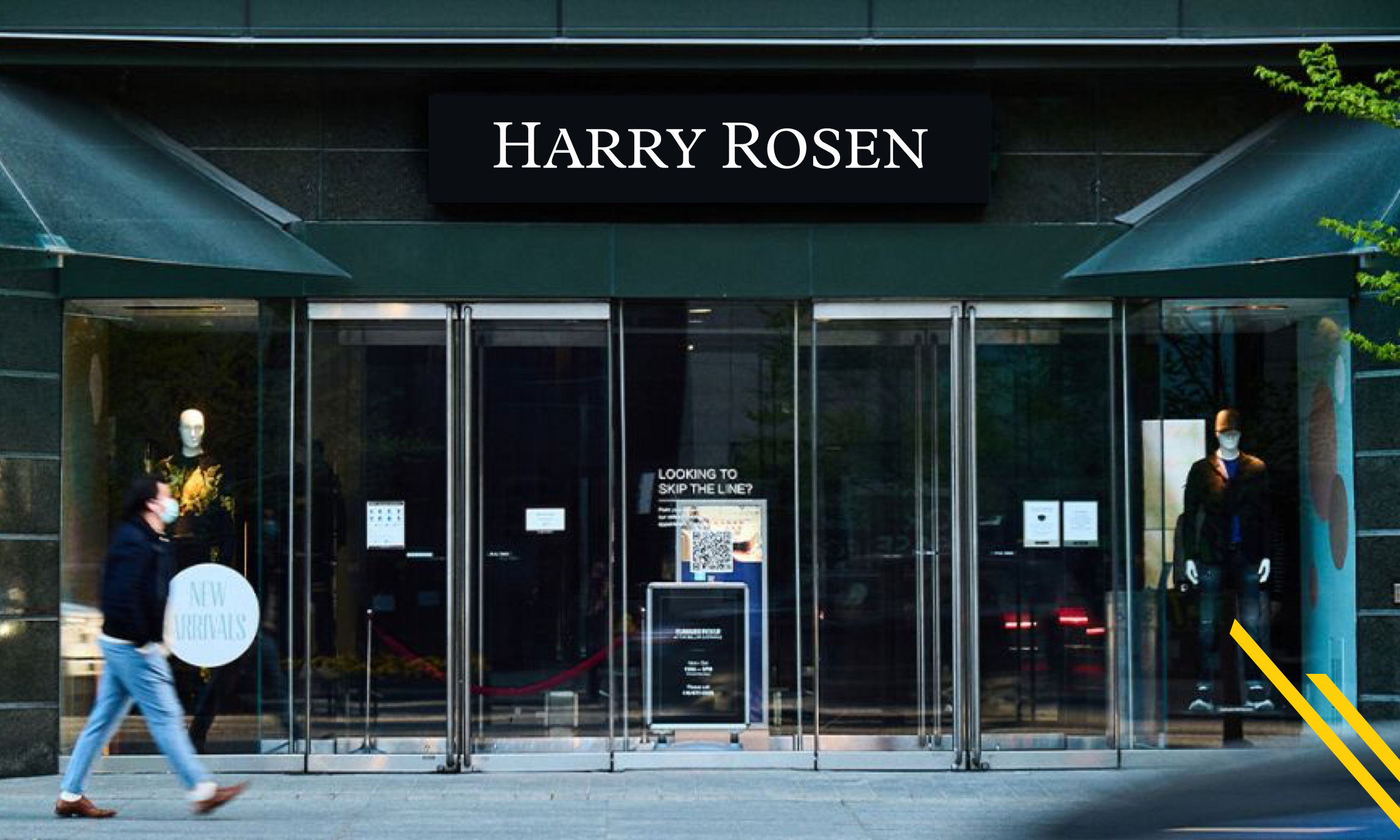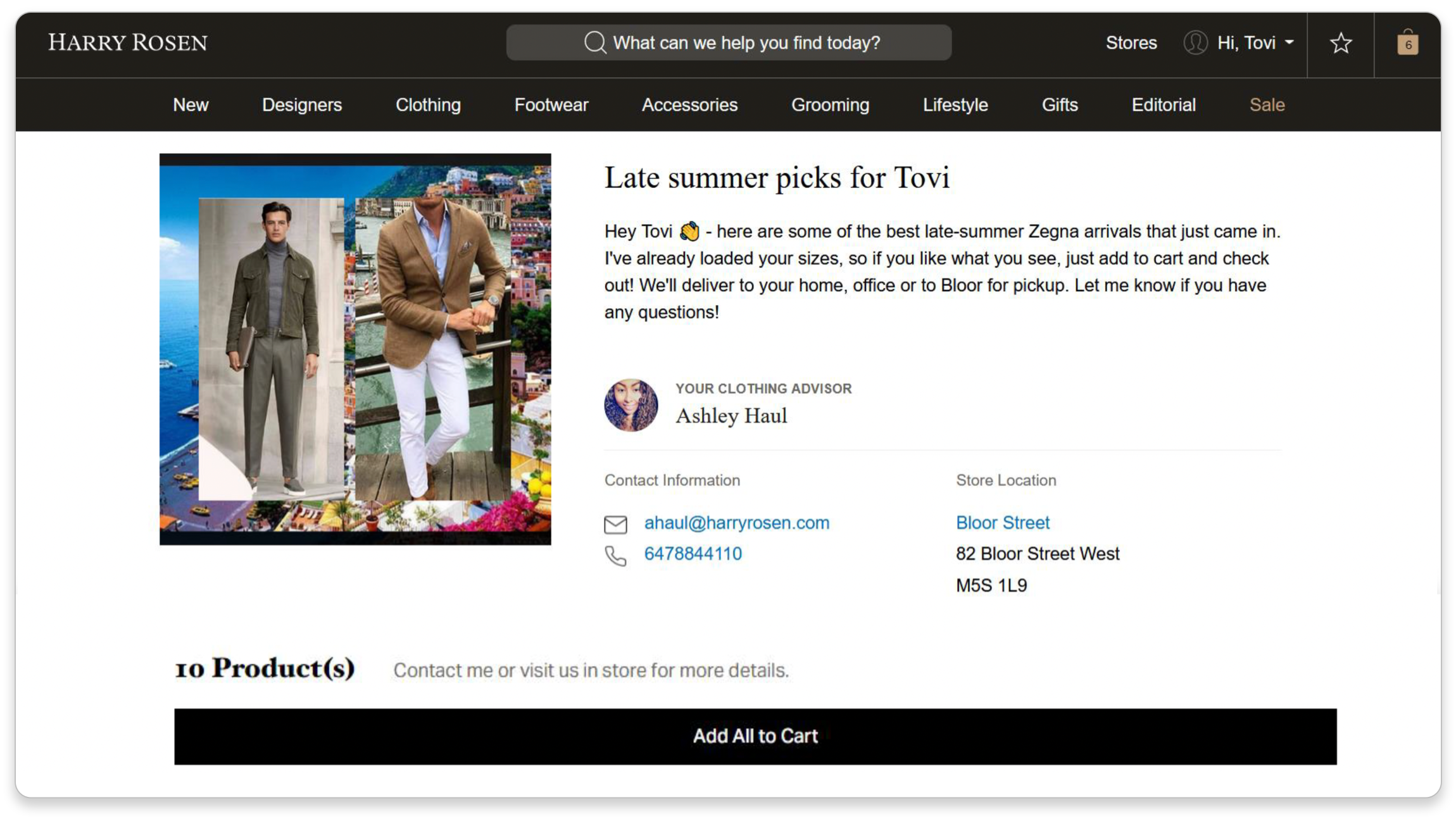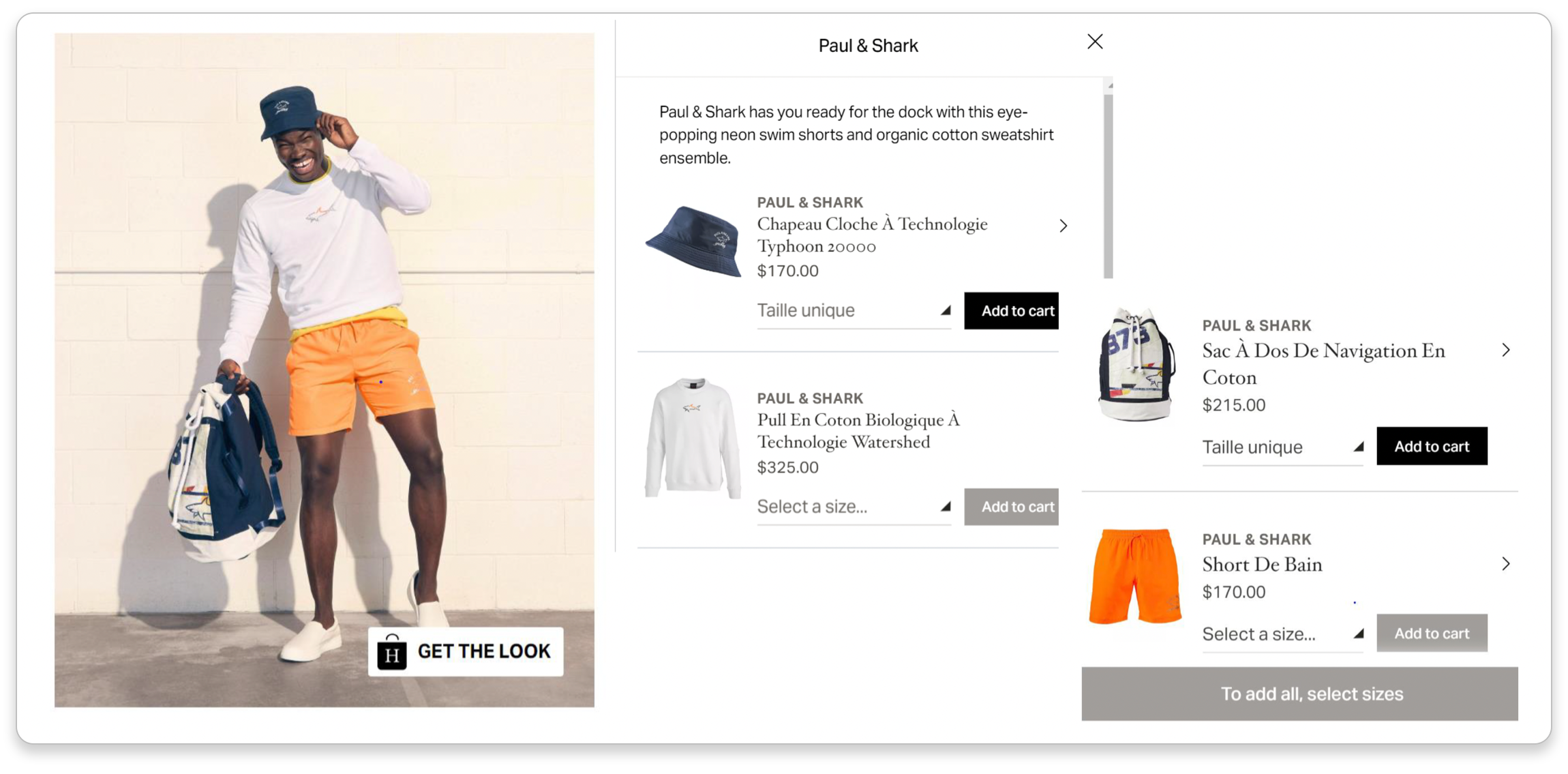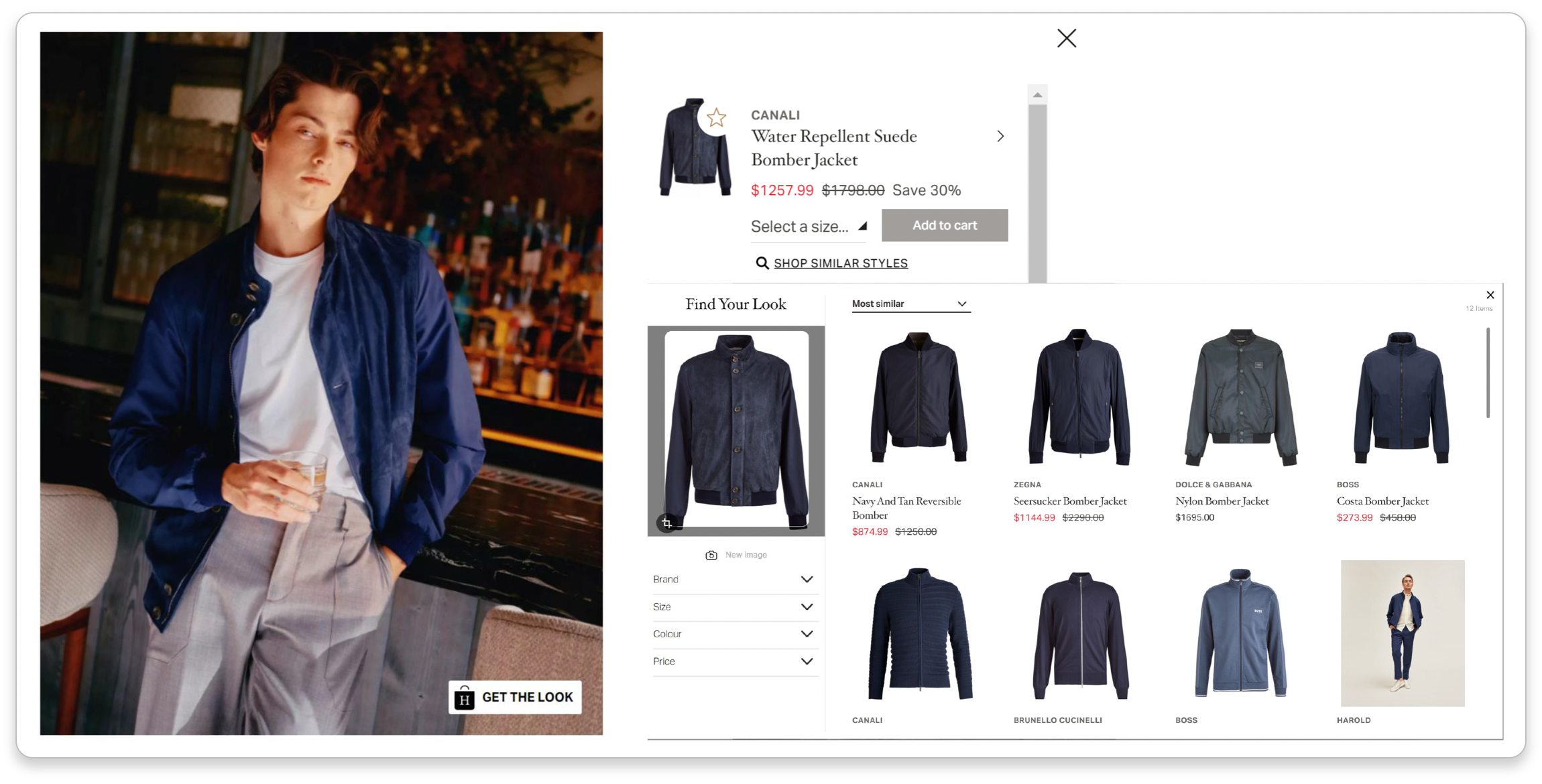
Our Modern Commerce Day series continues with an amazing digital transformation story from commercetools’ customer Harry Rosen. The 68-year-old Canadian luxury menswear retailer had just started planning its migration from legacy technology to a modern, composable commerce solution when COVID-19 hit. After shuttering its stores, the company fast-tracked the project in hopes of saving the business. At the time, leadership didn’t believe any eCommerce solution could deliver an experience that met their expectations — much less those of their customers. Ultimately, they discovered having the right technology in place actually digitally enabled the sales and marketing teams, giving them the power to create comparable customer journeys online. Today, these experiences are driving higher sales both online and in-store.
Get Started with Composable Commerce Today
The Harry Rosen Legacy
Relationships, expertise and curation are the three main ingredients behind the longstanding success of the Harry Rosen brand. To help Modern Commerce Day 2022 attendees understand just how Harry Rosen evolved into “Harry Rosen,” Tovi Heilbronn, Director of Digital Product & Experience, shared his personal relationship with the brand. He explained that when he became a working professional, his father — who is what the company refers to as a "hero" customer — came to him and said, "Okay, now it's time for me to share with you almost like a family secret.”
He told Tovi about Jack Rodrieguez, his longtime advisor at Harry Rosen. He instructed his son to schedule an appointment with Jack, explaining, “He'll set you up with what you need. You will develop your own stylistic posture by working with him.” Tovi added, “It's actually not that unusual to have this happen between father and son — sometimes multi-generationally; one advisor for three generations of the same family. So these relationships are long-lasting, very meaningful and important to how we do business.”
Evolving the Harry Rosen brand
Originally, when the eCommerce team requested budget to modernize the brand’s technology, the plan was to simply update their existing legacy platform. However, when the funds were granted, they decided they were tired of having to constantly upgrade. They began looking for an option that delivered more longterm value, enabled them to “say yes more than no” and finally, allowed them to digitize what makes Harry Rosen special. Migrating to a headless, composable solution emerged as the perfect alternative.
Tovi highlighted three unique journeys the brand was able to create as a courtesy of composable commerce — customer experiences that not only got them through the pandemic but contributed to leadership predicting a 40% increase in digital sales by 2025. “With the tech we have and the people using that tech, we're much more capable of telling the story and selling the value of the products we sell.”
Journey #1: Digitized style consultations
For over 50 years, Harry Rosen sales representatives, known as “personal advisors,” prepared for client appointments in advance, pulling together head-to-toe outfits based on their knowledge and experience with the individual. When the client arrived at the store, all items would be laid out on countertops for review. As the typical Harry Rosen customer is a busy executive, this curated approach made shopping easier and faster.

Today, advisors are replicating the in-store experience with digital laydowns. Using their knowledge of their client’s needs, gained from past experience and recent conversations, advisors pull together digital images of multiple items to create complete looks, presenting each one on a personalized webpage. The advisor even pre-populates each item with the client’s correct size — all the individual has to do is click "add to cart" and, when they're done shopping, hit "checkout." According to Tovi, digital laydowns quickly gained acceptance by the brand’s loyal clientele and now account for 10% of all digital sales and have a 3x lower return rate than when customers make their own choices.

#2 Enabling impulse shopping
The marketing team is leveraging the flexibility of composable commerce to increase the value of the photography the brand continually produces to promote fashion trends on its website as well within the pages of “Harry,” their quarterly fashion magazine. Since the headless component of composable commerce enables non-technical users to easily and quickly update content without risk, the team has been able to repurpose the images, turning them into shoppable moments that incentivize impulse shopping.

Previously the purpose of featuring head-to-toe “fashion” images on harryrosen.com was simply to provide shoppers with style inspiration. Today, every photo has a "Get the Look" button attached to it. Once a visitor clicks on it, a pop-up with thumbnail shots of every featured product appears, allowing them to easily add items to their cart. To facilitate the same experience with print materials, the company added a QR code next to every fashion photo. When the viewer activates the code with their mobile device, they’re taken directly to a webpage displaying all of the products that created the complete look.

Regardless of whether the customer is browsing online or flipping through the magazine, all they have to do is select the right sizes, add to cart and check out. There’s even a “‘Shop similar styles” button that provides shoppers with alternative yet comparable products and additional price point options. Tovi shared that “Get the Look” is delivering a 300% lift in content page value and 150% increase in page views — results which prompted the brand to implement the "Get the Look" QR code initiative on all store windows as well. Now, whenever a window shopper or passerby sees something they like on a mannequin, they can quickly find and purchase the item(s) online.
#3 Seamless transition from online to in-store
Most recently, the eCommerce team has been focusing on delivering a true omnichannel journey, first by removing the friction caused by offering online discounts that are not available in-store, such as the ones given to first-time shoppers. They’re doing this by connecting their eCommerce discounting engine to their in-store POS system. This is just the start, though. Tovi explained that the goal is to stitch everything together — product pricing, discounts available wherever you are, inventory, loyalty, client records and orders, etc. — effectively putting technology in the background and shifting the focus to the relationship each client has with the brand.
To learn more about how Harry Rosen is preserving the legacy of the brand while embracing a digitally-driven future, watch the full Modern Commerce Day session, Digitizing Luxury Experiences with MACH.